Freeze Frame: Kentucky’s Reboot
Posted by Brian Joyce on February 16th, 2017Late in conference play is usually the point when young teams start to click. John Calipari’s latest edition of a young team at Kentucky, however, appeared to be regressing during a recent five-game stretch where the Wildcats lost three games. Over that period, his team was held under a point per possession three times — after doing so only twice to that point in the season — and gave up more than a point per possession to all five opponents. It wasn’t a very good run of play, but perhaps the predicted demise of Kentucky came far too soon.
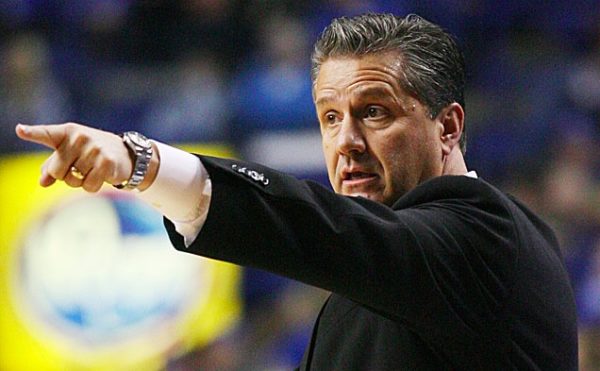
Will Calipari’s latest reboot work to turn around the Wildcats? (image via CBS Sports)
Calipari’s defense came together on the road against Alabama on Saturday (holding the Tide to 0.83 points per possession), and his team followed that up with its most complete performance in almost a month against Tennessee earlier this week. What did Kentucky recently change that Calipari hopes to ride into March? In this edition of Freeze Frame, we examine several factors that will help the Wildcats keep their winning streak alive.
1) Improved defense: Kentucky’s perimeter defense against Florida and LSU was the laughingstock of social media as its NBA-level athletes failed to keep the likes of the Tigers’ Brandon Sampson and the Gators’ Canyon Barry out of the lane. The Wildcats returned to form against Tennessee, however, repeatedly forcing the Vols to pull up for tough contested jumpers. Kentucky’s interior defense is the weakest of Calipari’s tenure in Lexington, but the Cats allowed a season-low 18 points in the paint, a stark difference from the 42 that Tennessee registered during the last meeting. If Kentucky’s big men can continue rotating over to provide help defense on drives into the lane, perhaps the Wildcats’ interior defense can become adequate enough to make a run.
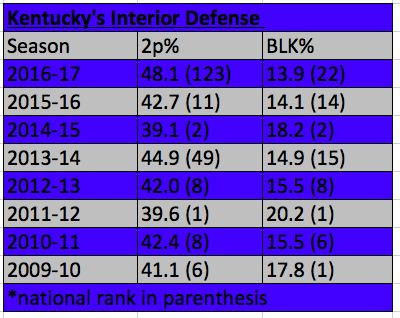
Kentucky’s interior defense is the worst in the Calipari era.
2) Monk’s ability to put the ball on the floor: Malik Monk has bailed the Wildcats out of numerous games this season with his incredibly hot shooting, but the knock on the freshman superstar is that he cannot create his own shot. Monk has proven to be a prolific shooter, but he has largely been relegated to a catch-and-shoot kind of scorer. According to hoop-math.com, Monk takes just 20.2 percent of his field goal attempts at the rim. To this point in his college career, he rarely puts the ball on the floor and drives to the basket.
With under a minute to go against Alabama, Monk comes off a screen to receive the ball on the wing. Rather than pull up for a jumper as he normally does, Monk notices that two Alabama defenders are covering him for the shot, so he drives the lane instead.
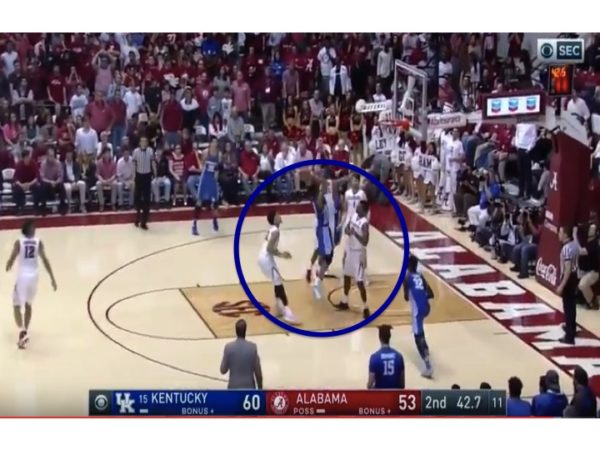
Monk draws quite a bit of attention in the lane.
Monk has several options here, including a wide-open Derek Willis spotting up for three and a streaking Wenyen Gabriel heading toward the basket. When Monk drives into the lane, he gives the Wildcats a number of high-value offensive options: he can attack the rim for a basket; he can get fouled; or he can kick out for an open jumper. In this case he attacked and converted the basket.
Early in the second half against Tennessee, Monk drew attention and dished off for an open teammate. In the first frame below, Monk comes off a screen.
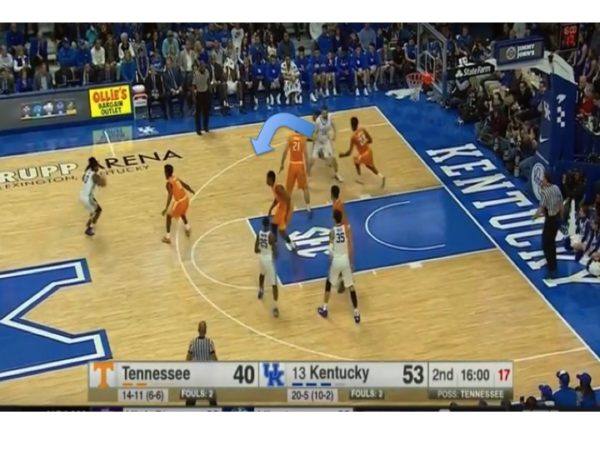
Monk comes off a down screen.
He then drives the lane which causes all five Tennessee defenders to pinch inward.
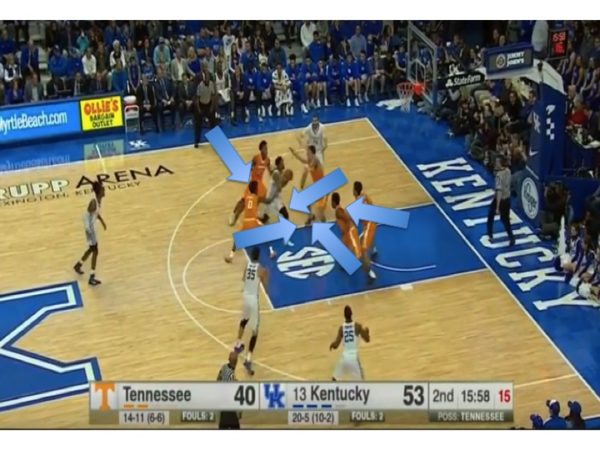
Monk draws all the attention.
Monk then makes the smart decision to pass out to an open Isaac Humphries, who knocks down his patented short-range jumper.
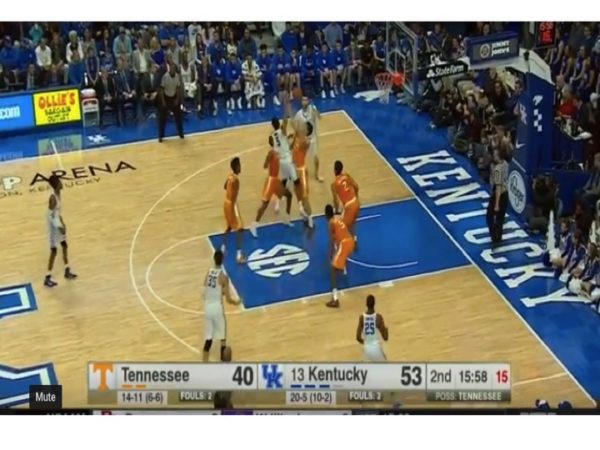
Humphries is wide open for the open J.
3) Improved offensive efficiency late in the shot clock: Calipari’s squad has been discussed at length this season as one of the fastest teams in college basketball, but the Wildcats are slowing down as the season wears on. In hand-charting nearly 1,000 offensive possession for all 13 of Kentucky’s SEC games to date, the Wildcats have decreased their reliance on scoring quickly (shown in the chart below as possessions within the first 10 seconds of the shot clock) to a much more patient and deliberate half-court offense. Kentucky’s overall offensive efficiency has similarly decreased over recent weeks, but its efficiency in seconds 11-30 of the shot clock against LSU and Tennessee was better than during the first 10 seconds.

Kentucky’s offense by possession length.
Shot clock data also reveals an interesting finding about Kentucky’s offense with De’Aaron Fox on the floor versus when he is on the bench.

With Fox on the court
The data shows that Kentucky’s offensive efficiency evens out in seconds 11-30 of the shot clock regardless of whether Fox is on the floor. In other words, Fox adds value for Kentucky in pushing the pace, but once Kentucky settles into the half-court, his impact on the Wildcats’ offense is negligible. This is a trend worth keeping an eye on as opposing teams work to limit Kentucky’s transition offense by forcing the Wildcats to execute in the later stages of the shot clock.

Without Fox on the court
If Kentucky continues through February with an improved interior defense, a more aggressive offensive attack from Monk, and a more efficient half-court offense late in the shot clock, the Wildcats may be coming together at just the right time. Calipari’s notorious tweaks have worked before, and his latest reboot might be exactly what Kentucky needs to push through the rest of the season.












































